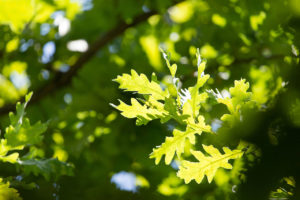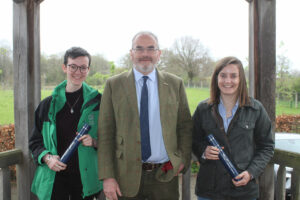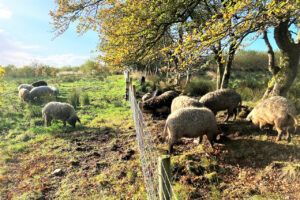Following Richard White MICFor’s thoughts on the proposed ban on lead-based ammunition in UKWAS certified woods, Jonathan Spencer MBE, formerly Head of Environment for Forest England and a Member of the UKWAS Revision Working Group, responds…
Lead has long been known to be a very toxic metal and recreational shooting and game management remain the last major source of lead into the environment. Some 4 to 6,000 tonnes of lead are deposited each year across the UK landscape. The phasing out of lead ammunition is now widely acknowledged as an important goal, attested to by both BASC and the GWCT announcing their ambition to voluntarily phase out the use of lead shot and lead ammunition by February 2025.
Decades of scientific research has demonstrated its lethal impact on wildfowl and other birds, who pick up lead shot in soils and water bodies, and to raptors and scavenging birds ingesting lead from prey or carrion. Risks to human health remain high (with an estimated 44 million people seen at risk through the consumption of game and venison across the EU). A major recent review of lead ammunition and fishing gear, and the transition to non-lead alternatives can be found in a special edition of the Journal Ambio, 2019 (https://link.springer.com/journal/13280/volumes-and-issues/48-9)
Venison sales are of course of considerable importance in the control of deer populations in forests, and the impact they have on forestry interests. With venison being widely promoted as a lean and healthy meat major dealers have, from August 2021, imposed a restriction on venison harvested using lead ammunition and will now only receive supplies that can be guaranteed as harvested with non-toxic ammunition; to supply lead free healthy venison in effect. The adoption of the requirement to remove lead from UKWAS certified forests will ensure that certified forests can supply the market with a guaranteed supply of game and venison harvested with non-toxic ammunition while ensuring deer control can continue to address damage to forest trees from deer.
The costs of non-toxic ammunition are indeed higher at present, though this will undoubtedly change as demand shifts from toxic lead ammunition to non-toxic alternatives. There are also alternative means of control for smaller rodents, rabbits etc that currently require small calibre ammunition which has a more limited range of alternatives available. The adoption of these alternatives, alongside the use of alternatives for recreational shooting and forest management will ensure that certified forests are not contributing to the burden of lead in the environment and that venison and game produced from such forests can be readily and confidently marketed as lead free.
Jonathan Spencer MBE, FRSB, FRSA






